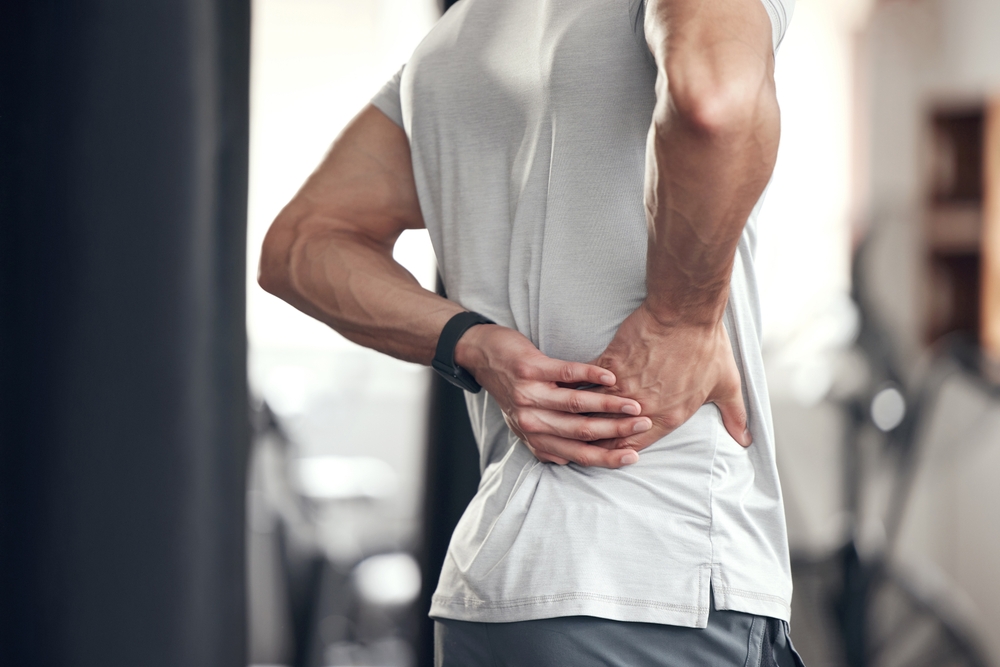Back pain can often be mistaken for hip pain since the hip joint is so close to the spine. Generally, hip and back pain can range from a dull ache to sharp pain. Hip and back pain often feel similar, so much so that many people confuse one for the other. Because the hip joint is located close to the spine, it can be difficult to tell which area is actually causing the discomfort. At Iowa Ortho, we help patients accurately identify and treat the true source of their pain to restore mobility and quality of life.
Common Signs of Hip Pain
“Although the hip joint can withstand repeated motion and a fair amount of wear and tear, once its normal function is interrupted by inflammation or other factors, you can see a significant decline in your daily activities as a result.”
— Mark Matthes, M.D.
Hip pain often originates in the groin area due to the hip joint’s deep location near the spine. The most common cause is osteoarthritis, but other conditions like labral tears or bursitis may also contribute.
Symptoms of Hip-Related Pain
- Pain or discomfort that comes and goes, becoming more frequent over time
- Pain that worsens with walking, standing, or weight-bearing activities
- Limping or limited range of motion
- Pain radiating to the thigh or buttocks
Hip pain is not just a concern for older adults. It can affect patients of all ages, so don’t ignore persistent discomfort.
Common Signs of Back Pain
“The majority of adults will have back pain at some point in their lifetime. If it does not respond to simple conservative treatments, further evaluation may be necessary.”
— Brett Rosenthal, M.D.
Back pain often results from a strain, injury, herniated disc, or degenerative spine condition. It may be sharp, dull, or radiate through the lower body depending on the cause.
Symptoms of Back-Related Pain:
- Pain is limited to the lower back or buttocks
- Pain that shoots down the leg (sciatica)
- Pain that worsens with sitting or bending
- Pain that improves with standing or walking
If back pain persists longer than two weeks or limits your ability to function, it’s time to seek medical attention.
Diagnosing the Source of Your Pain
“Due to your nervous system being so intricate, pain can radiate from multiple sources. So your pain can feel like it is affecting one spot but originates from a different part of your body.”
— Ben Beecher, M.D.
Proper diagnosis is key to creating an effective treatment plan. At Iowa Ortho, we use the following methods to pinpoint the source of your pain:
- Physical Examination: Evaluates how your body moves and what reproduces the pain
- X-rays or CT Scans: Show bone structure and signs of arthritis or disc degeneration
- MRI or Ultrasound: Highlights soft tissues, nerves, and other structures not visible on X-rays
Non-Surgical Treatment Options
“Surgery can seem overwhelming, so we always strive to exhaust all non-surgical treatment options first.”
— Kurt Smith, D.O.
Most patients find relief through conservative treatment, especially in the early stages of hip or back pain. These non-surgical approaches are designed to reduce inflammation, restore mobility, and improve quality of life.
Common Non-Surgical Options Include:
Medications:
- Anti-inflammatories (e.g., ibuprofen)
- Topical treatments (e.g., lidocaine cream, diclofenac gel)
- Acetaminophen for general pain relief
Hot & Cold Therapy:
- Heat relaxes muscles and improves flexibility
- Ice reduces inflammation and swelling
Steroid Injections:
- Targeted relief for inflamed joints or compressed nerves
Surgical Treatment Options
“Hip surgery, either replacement or arthroscopic, has a very quick and complete recovery in most instances.”
— Craig Mahoney, M.D.
When conservative treatments aren’t enough, our orthopedic specialists may recommend minimally invasive surgery to treat the root cause of your pain. These procedures are designed to reduce recovery time and improve long-term outcomes.
Hip Procedures:
- Hip Arthroscopy: Removes damaged tissue and repairs labral tears using a small camera and tools
- Hip Replacement: Replaces the damaged ball-and-socket joint with an artificial implant
Spine Procedures:
- Laminectomy (Decompression): Relieves pressure from spinal stenosis by removing bone spurs
- Microdiscectomy: Removes part of a herniated disc that is pressing on a nerve
- Vertebroplasty/Kyphoplasty: Minimally invasive cement injections to repair spinal fractures from osteoporosis
- Cervical Disc Replacement: Maintains spine motion by replacing a damaged disc in the neck
- Spinal Fusion: Joins two or more vertebrae to stabilize the spine and relieve chronic pain
Get Relief from Hip or Back Pain at Iowa Ortho
Whether your pain originates in the hip or the back, Iowa Ortho offers comprehensive diagnostic care and advanced treatment options to help you move better and feel better.

